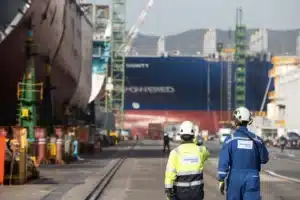DNV Updates Ship Classification Rules with Focus on Decarbonization and Innovation

Oslo, Norway, 09 July 2024: DNV, a leading classification society, has released updates to its rules for ship and offshore structure classification. These updates aim to support the development and deployment of decarbonization technologies while bringing clarity to the responsibilities of class customers for notations with both design and operational requirements.
Geir Dugstad, DNV Maritime’s Global Technical Director, emphasized the industry’s diverse challenges and opportunities. “Our customers are seeking classification support for new fuels, demonstrating efficiencies, new vessel types, and advanced technologies like on-board carbon capture,” he stated.
A significant highlight of the updates is the introduction of in-operation notations. These notations create a classification framework with dedicated Fleet in service notations, enabling owners and operators to showcase their advanced procedures and reporting processes for safety and efficiency. The new rules distinguish responsibilities between the yards for new building phases and the owners and operators during the vessel’s operational phase.
The updates also include two new class notations: Gas fuelled Hydrogen and OCCS (onboard carbon capture and storage). The Gas fuelled Hydrogen notation provides requirements for the ship’s fuel system, fuel bunkering connection, and consumers, paving the way for hydrogen-fuelled newbuildings. Although hydrogen is a potential zero-carbon fuel, it is not yet covered by international regulations.
OCCS systems, currently being trialed, offer vessels a way to reduce emissions and comply with regulations. The OCCS notation provides a framework for exhaust pre-treatment, absorption, after-treatment systems, liquefaction, CO2 storage, and transfer ashore.
OceanScore identifies EU ETS best practice to tackle ‘strategy gaps’ on compliance
Additional highlights include the new BOG (boil-off gas) notation for liquefied gas tank systems, a new notation for live fish transport vessels, and a class notation for stability pontoons used in heavy lift operations. Other updates include qualifiers for hatchcoverless vessels and vessels transporting electric vehicles, as well as revised rules for diving systems aligned with the IMO 2023 diving code.
These updates reflect DNV’s commitment to innovation and safety in the maritime industry, reinforcing its expertise in maritime decarbonization and advanced technologies.

